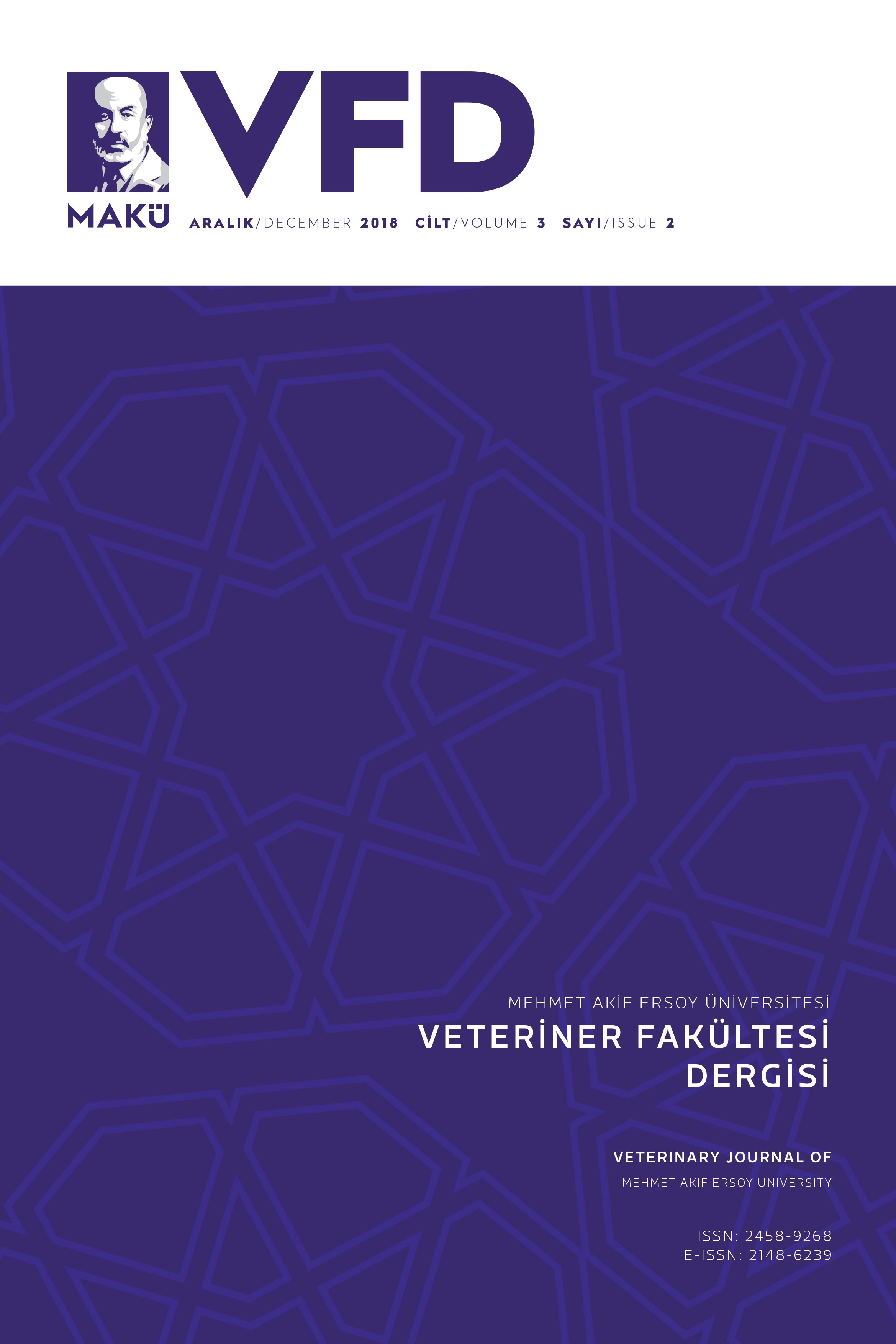Effective Genes on Hair Follicle Growth
Hayvan ırkların geliştirilmesi kapsamında moleküler çalışmalar ön plana çıkmaktadır. Bu nedenle hayvanlarda kıl üretimi ve kalitesi üzerine yapılan ve yapılacak olan genetik çalışmalar önem kazanmıştır. Keçi ve koyun gibi tekstil ürünleri açısından değerli hayvanlarda, kıl yapısı temel olarak primer ve sekonder olmak üzere ikiye ayrılmaktadır. Bu foliküllerle yapılan çalışmalarda primer foliküllerde 10077 genin, sekonder foliküllerde ise 7772 genin ifade edildiği tespit edilmiştir. Bu derlemede, hayvansal lifleri oluşturan kıl folikülünün anatomisi ve gelişim süreci, kıl gelişimine etki eden önemli genler ve bu genlerin, kıl folikülünü şekillendirme süreçleri özetlenecektir. Buna ek olarak kıl folikülünün yapısı, morfogenezi ve siklusun meydana geldiği anajen, katajen ve telojen aşamaları ve bu aşamalardaki genlerin etkinliğinden bahsedilecektir. Çalışmanın kapsamı; kıl folikülünün oluşumundan ilk siklusun başlamasına ve sürecin devamlı olarak tekrarında kalite ile ilişkilendirilmiş genlerin incelenmesini içermektedir.
Anahtar Kelimeler:
Etkili Genler, Gen İfadesi, Kıl Folikülü, Morfogenez
Effective Genes on Hair Follicle Growth
Molecular studies have come to the fore within the scope of the development of animal breeding. For this reason, genetic studies made or will be made on production and quality of hair in animals have become more of an issue. In animals like goat and sheep been rich in terms of textile products, hair structure is constitutively divided into two as primary and secondary. In studies made in these follicles, it is identified that the 10077 genes are expressed in the primary hair follicles and the 7772 genes are expressed in the secondary hair follicles. In this review, it will be summarized the anatomy and the process of development of the hair follicle generating the animal fibers, genes had an effect upon development of hair and the processes formed the hair follicle of these genes. In addition, it will be mentioned about structure of hair follicle and efficiency of genes; morphogenesis and cycle stages; anagen, catagen and telogen. The scope of this work includes examination of genes associated with quality from the formation of hair follicle to starting of first cycle and in the repetition of process continually.
Keywords:
Cycle, Effective Genes, Gene Expression, Hair Follicle,
___
- Alonso L, Fuchs E. The hair cycle. Journal of Cell Science. 2006; 119: 391-393.
- Blanpain C, Lowry WE, Geoghegan A, Polak L, Fuchs E. Self-renewal, multipotency, and the existence of two cell populations within an epithelial stem cell niche. Cell. 2004; 118(5): 635-648.
- Blume-Peytavi U, Tosti A, Whiting DA, Trüeb RM. Hair growth and disoders. Springer, Berlin Heidelberg; 2008.
- Botchkarev VA, Botchkareva NV, Roth W, Nakamura M, Chen LH, Herzog W, Lindner G, McMahon JA, Peters C, Lauster R. Noggin is a mesenchymally derived stimulator of hair-follicle induction. Nature Cell Biology. 1999; 1: 158-164.
- Bray SJ. Notch signalling: A simple pathway becomes complex. Nature Reviews Molecular Cell Biology. 2006; 7: 678-689.
- Chen D, Jarrell A, Guo C, Lang R, Atit R. Dermal β-catenin activity in response to epidermal Wnt ligands is required for fibroblast proliferation and hair follicle initiation. Development. 2012; 139: 1522-1533.
- Clavel C, Grisanti L, Zemla R, Rezza A, Barros R, Sennett R, Mazloom AR, Chung CY, Cai X, Cai CL. Sox2 in the dermal papilla niche controls hair growth by fine-tuning BMP signaling in differentiating hair shaft progenitors. Developmental Cell. 2012; 23: 981-994.
- Demirtas H., 2013. (http://www.veteriner.cc/keci/keci_kili.asp). Keçi kılından elde edilen ürünler. Erişim Tarihi: 23.06.2015.
- Dong Y, Xie M, Jiang Y, Xiao N, Du X, Zhang W, Tosser-Klopp G, Wang J, Yang S, Liang J, Chen W, Chen J, Zeng P, Hou Y, Bian C, Pan S, Li Y, Liu X, Wang W, Servin B, Sayre B, Zhu B, Sweeney D, Moore R, Nie W, Shen Y, Zhao R, Zhang G, Li J, Faraut T, Womack J, Zhang Y, Kijas J, Cockett N, Xu X, Zhao S, Wang J, Wang W. Sequencing and automated whole-genome optical mapping of the genome of a domestic goat (Capra hircus). Nature Biotechnology. 2013; 31: 135-141.
- Başlangıç: 2016
- Yayıncı: Burdur Mehmet Akif Ersoy Üniversitesi
Sayıdaki Diğer Makaleler
Beslenmenin Hayvansal Ürünlerin Yağ Oksidasyonu Üzerine Etkisi*
Kadir Emre BUĞDAYCI, M.Numan OĞUZ
Effective Genes on Hair Follicle Growth
Mehmet Cevat TEMİZKAN, Alev Gürol BAYRAKTAROĞLU
Radoslav MİHAYLOV, Rosen DİMİTROV, Rumen BİNEV, Kamelia STAMATOVA-YOVCHEVA
Bir İnek Vaginasında Fibrosarkom Olgusu
Zafer ÖZYILDIZ, Şule Yurdagül ÖZSOY, Gökhan DOĞRUER
Evcil Hayvan Spermalarının Dondurulmasında Farklı Kanatlı Türü Yumurta Sarılarının Koruyucu Etkileri
Dişi Köpek Ve Kedilerde Üremenin Kontrolünde GNRH Agonistleri
Aydın İlinde Bazı Sütçü Sığır İşletmelerinde Subakut Ruminal Asidozis İnsidansının Belirlenmesi
